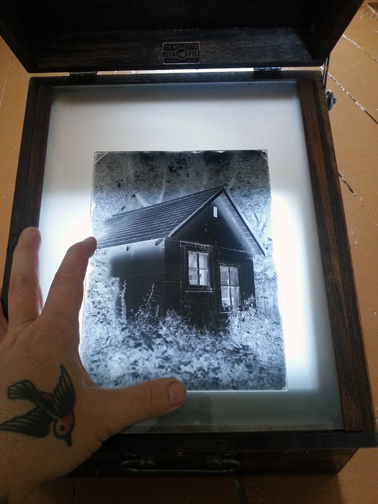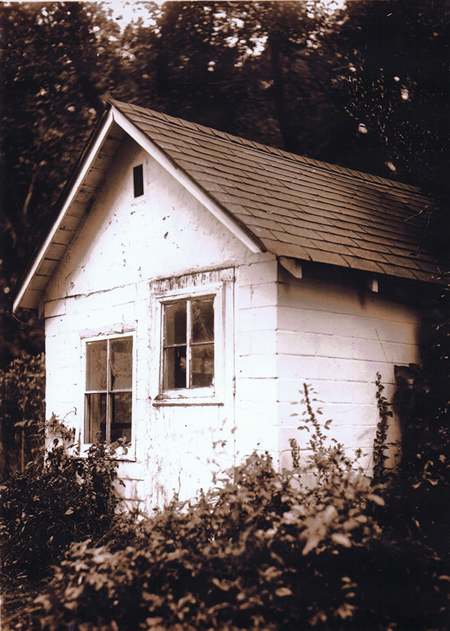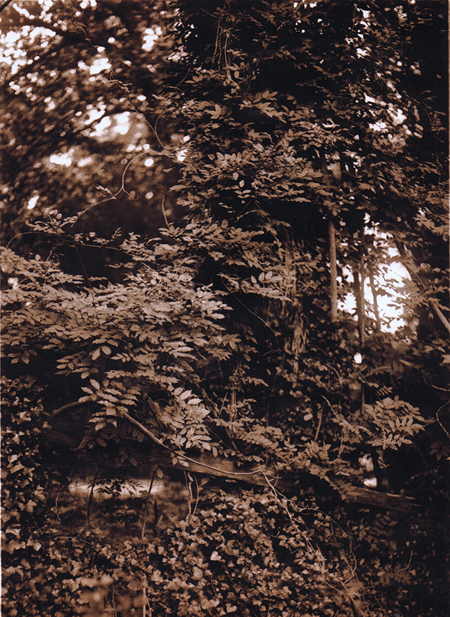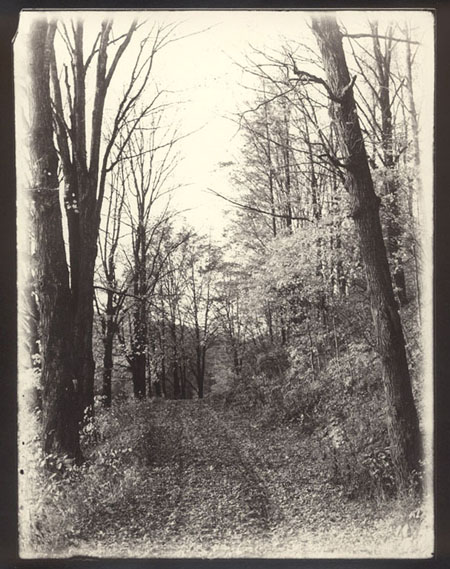Paul De Angelis: Whole Plate Dry Plate
October 20, 2013My interest in dry plate photography began when a dear friend bought me a whole plate negative as an incredibly thoughtful gift. In addition to being a pleasant image that I printed to hang on my wall, the negative itself is a thing of beauty.

As I researched the process of making glass negatives, I found that almost all of the images from which I had been drawing my inspiration were made in the early days of emulsion making and that the vast majority were made with dry plates. During my investigations, I found a website of a craftsman dedicated to making cameras for wetplate photographers. Intrigued by the hand-made aesthetic of collodion photography, I jumped in with both feet and soon was making negatives that were quite a step above what is possible with modern film.

I was greatly inspired by the example of John Coffer, who lives in a log cabin he built by hand and lives without electricity and running water. His approach to collodion photography is honest and highly idealistic, both qualities I truly admire. I also was able to assist one of John’s foremost students, Bob Szabo, on a very long shoot and I was able to learn much from him. Bob had an ambrotype appear on the cover of National Geographic magazine and is now one of the foremost wetplate artists in the world.
Despite my success at being able to handcraft my emulsions with collodion, I was constantly frustrated by the cumbersome nature of the process itself. Indeed, it was always a drag to shoot through excessively long exposures and having to be anchored to a darkroom — or to drag one along with me. I tried to make do with the process but was constantly meeting disappointment. I even took a camera and assorted equipment to India with me but was unable to get any good quality collodion. My interest in shooting collodion waned and I stopped following the forums or public media pages as the use of artificial lighting, period-incorrect chemicals, and occasional photoshopping, are rampant and none of it appeals to me.

A few years later I discovered “The Light Farm” and was enthused to see a renewed interest in making gelatin-based plates. Although it took me some years to get into a position where I could begin experimenting with emulsion-making, I have finally gotten there. The turning point came when my wife and I bought our house earlier this year. Being able to set up a dedicated darkroom where one has the freedom to spill silver nitrate, splash developer, and slosh fixer around is a big improvement over renting an apartment!
Beginning with Kevin Klein’s formula posted on this website, I had some OK results but nothing to write home about. It is a simple formula that was easy to mix up, but Denise Ross suggested that I try the recipe included in her web tutorial workshops. Having plenty of chems from my collodion experiments, I made up the Ammonium Bromide version and have just began to experiment with it. As results follow, I hope to contribute more to this site that is helping me create the kind of images I have been longing for.
Paul De Angelis, Stone Mountain, GA
Contact prints. Whole Plate format (6.5 x 8.5 inches) dry plate. Commercial FB paper. Split copper/selenium toned.

Contact print. Early 20th century Whole Plate format dry plate. Commercial FB paper. Sepia toned.
